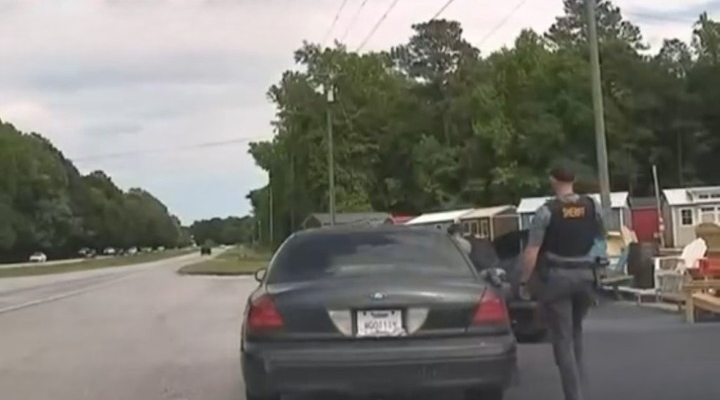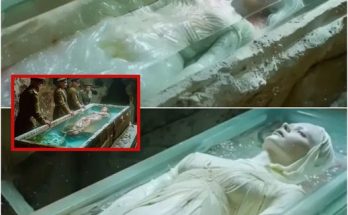What began as a seemingly ordinary traffic stop on a quiet Charleston roadway quickly escalated into a violent and deeply unsettling event. Within moments, the encounter transformed from a standard law enforcement procedure into a harrowing ordeal that has since shaken the city, raised serious questions about public safety, and reignited conversations about the growing influence of organized gangs across South Carolina.
This incident was not just about a single act of violence. It was about the vulnerabilities of law enforcement officers during routine duties, the growing presence of criminal networks in the region, and the resilience of a community determined not to let violence define its future.
The Night of the Shooting
According to reports, the confrontation began when a Charleston County deputy noticed a vehicle behaving suspiciously. The deputy, whose name has not been released for safety reasons, initiated a standard traffic stop. The location was a dimly lit stretch of road—an environment where officers typically expect compliance rather than confrontation.
But this was no ordinary driver. Behind the wheel sat a man known to authorities as a gang leader, someone whose name had circulated through criminal databases and law enforcement files for years.
In an instant, the atmosphere shifted. Instead of complying, the suspect allegedly drew a firearm and opened fire. Shots rang out, shattering the stillness of the night and forcing the deputy into a desperate fight for survival.
Struck multiple times, the deputy nevertheless managed to call for backup before collapsing. Emergency responders arrived swiftly, transporting him to a nearby hospital. While his injuries were critical, doctors were able to stabilize him—a recovery many described as miraculous.
The Suspect’s Criminal Background
The shooter was not an unknown figure in Charleston’s criminal landscape. He had long been identified as a leader within the Gudda Boy Gang (GBG), a group tied to drug trafficking, illegal firearm distribution, and other forms of organized crime. His record reflected a history of violent offenses, repeated arrests, and suspected involvement in orchestrated gang activity.
Experts suggest that his decision to fire on a deputy was not merely an impulsive act of fear. Instead, it may have been a calculated move—either to assert dominance within the gang hierarchy or to send a broader message of defiance toward law enforcement.
Such brazen violence underscored a troubling reality: organized crime networks in the region are not just growing but becoming more confrontational.
The Immediate Response
The attack sparked a rapid and large-scale manhunt. Charleston police, aided by state troopers and federal agents, mobilized quickly. Roadblocks were set up, helicopters circled neighborhoods, and tactical units searched suspected hideouts.
After several tense hours, the suspect was located. A brief standoff ensued before authorities successfully apprehended him. His arrest marked the end of one chapter but left behind a city grappling with fear, anger, and uncertainty.
Community Shock and Support
News of the shooting spread quickly across Charleston. Residents who once felt insulated from gang activity suddenly realized how close it could come to their own neighborhoods.
Vigils formed outside the hospital where the deputy was being treated. Citizens, faith leaders, and local officials gathered with candles and prayers, demonstrating solidarity with the wounded officer and his family.
“This was not just an attack on one deputy,” one city leader said. “This was an attack on Charleston as a whole.”
The sheriff’s office echoed those sentiments, framing the shooting as more than a violent crime—it was a challenge to the authority of law enforcement and a reminder of the dangers officers face daily.
Gang Activity in South Carolina: A Rising Concern
While this incident shocked many, experts in criminal justice note that it is part of a larger pattern. Over the past decade, law enforcement agencies across South Carolina have tracked the spread of gangs, particularly those involved in narcotics distribution and illegal weapons.
Groups like GBG operate through a mix of fear, loyalty, and profit. They recruit young members, often from vulnerable communities, offering them a sense of belonging while pulling them into cycles of violence and crime.
Statistics show that gang-related violence has been on the rise in parts of the state. What once seemed confined to major cities has begun spilling into suburban and rural areas. For Charleston, the deputy’s shooting served as a stark reminder that no community is immune.
Law Enforcement Challenges
This incident also highlights the dangers officers face, even during “routine” duties. Traffic stops, while common, are among the most unpredictable aspects of police work. Officers never know whether the driver they pull over is a harmless motorist or a dangerous suspect with violent intentions.
Departments across the country have been investing in training and technology to improve officer safety. Body cameras, better communication systems, and specialized tactical training are increasingly common. Still, as Charleston’s deputy experienced firsthand, no amount of preparation can eliminate all risks.
The sheriff’s office has since reaffirmed its commitment to strengthening officer safety measures, emphasizing both vigilance and community cooperation.
The Broader Implications
For Charleston residents, the shooting was not just a crime—it was a wake-up call. It revealed how deeply organized crime networks can entrench themselves in a community and how quickly violence can erupt in unexpected places.
It also raised pressing questions:
-
How can communities better protect officers while they serve the public?
-
What strategies can effectively curb gang influence before violence escalates?
-
And perhaps most importantly, how can residents and law enforcement work together to restore a sense of safety?
Policy Discussions and Proposed Solutions
In the aftermath, city and state leaders have proposed a range of responses. Some advocate for tougher sentencing for repeat offenders, arguing that dangerous individuals should not have repeated opportunities to reoffend. Others emphasize prevention, calling for more investment in youth programs, education, and community outreach to disrupt the cycle of gang recruitment.
Law enforcement officials are also pushing for improved intelligence-sharing across jurisdictions. Gangs often operate beyond city or county lines, making it essential for agencies to collaborate rather than work in isolation.
Community leaders, meanwhile, stress the importance of trust. They argue that residents must feel confident in cooperating with police if meaningful progress is to be made against gang activity.
A Community Determined Not to Yield
As the wounded deputy continues his recovery, Charleston is working to balance grief with determination. Residents have shown resilience, standing together to support law enforcement while demanding action against gang violence.
Local organizations have begun hosting forums and discussions, providing spaces for citizens to voice concerns and explore solutions. Churches and nonprofits are also stepping up, offering mentorship and outreach to at-risk youth who might otherwise be vulnerable to gang recruitment.
Lessons Learned
The Charleston traffic stop will likely be remembered as a turning point in the city’s fight against organized crime. It demonstrated how quickly violence can erupt, how deeply gang influence can extend, and how vital it is for communities to respond with unity and resolve.
It also served as a sobering reminder: for law enforcement officers, no duty is ever truly routine. Each stop carries risks, and each encounter could be the difference between safety and tragedy.
Conclusion
The shooting of a Charleston deputy during what began as a standard traffic stop was more than an isolated act of violence. It was a moment that exposed the real and growing threat of gang activity in South Carolina, challenged the city to confront its vulnerabilities, and tested the resilience of its people.
Yet amid the fear and uncertainty, Charleston has shown strength. From the deputy’s survival to the swift response of law enforcement and the outpouring of community support, the city has proven that it will not bow to violence.
Moving forward, the challenge will be sustaining that unity—strengthening partnerships between residents, officials, and police, while addressing both the immediate and root causes of gang activity.
In the end, the message is clear: violence may strike suddenly, but Charleston’s commitment to justice and community safety will not be shaken.



